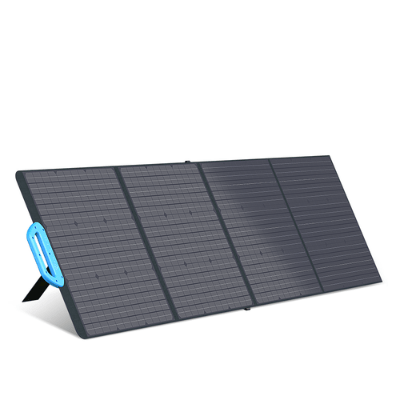
BLUETTI PV200 Solar Panel 200W
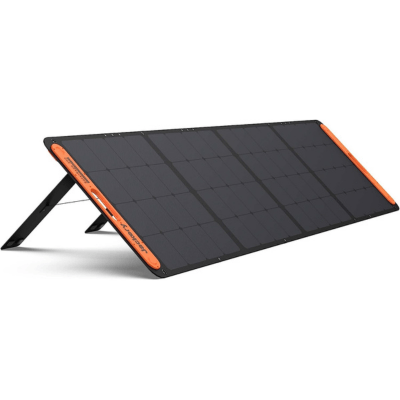
Jackery SolarSaga 200W Solar Panel
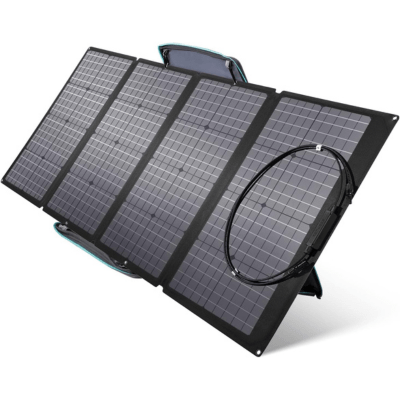
EcoFlow 160W Portable Solar Panel
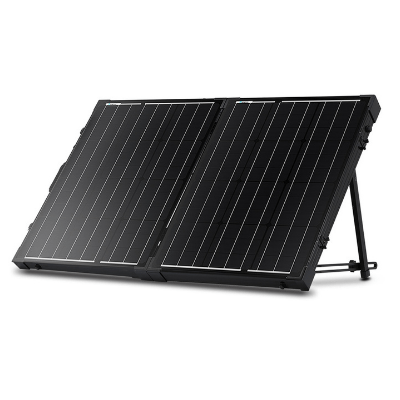
Renogy 100W Foldable Solar Suitcase with Voyager
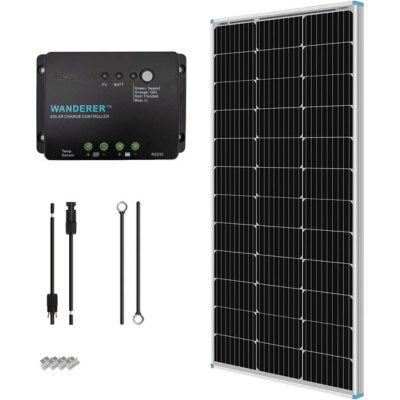
Renogy 100W 12V Monocrystalline Solar Starter Kit
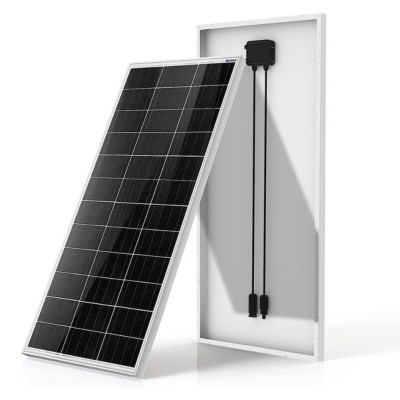
ECO-WORTHY 195 Watt 12 Volt Monocrystalline Solar Panel
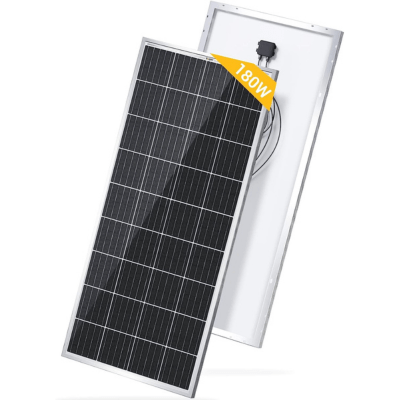
BougeRV 180W 12V Mono Solar Panel
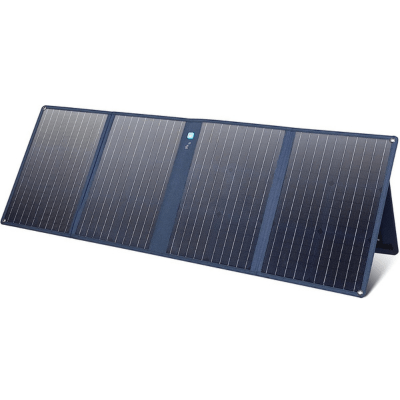
Anker 625 Solar Panel with Adjustable Kickstand
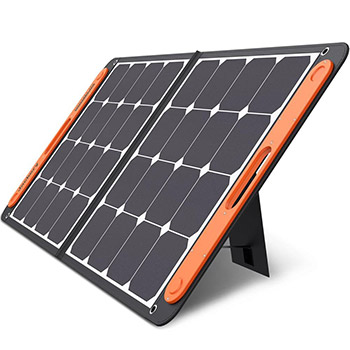
Jackery SolarSaga 100W Solar Panel
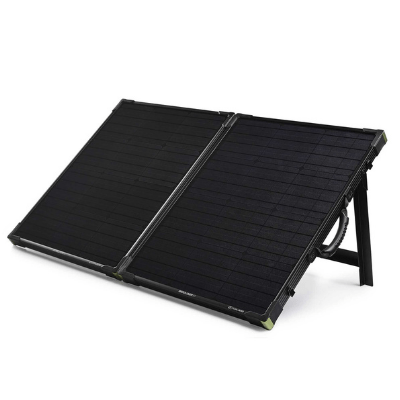
Goal Zero Boulder 100 Solar Panel Briefcase
When you need clean energy on the go, you go to portable solar panels. Which one is the best buy and how do you actually use one?
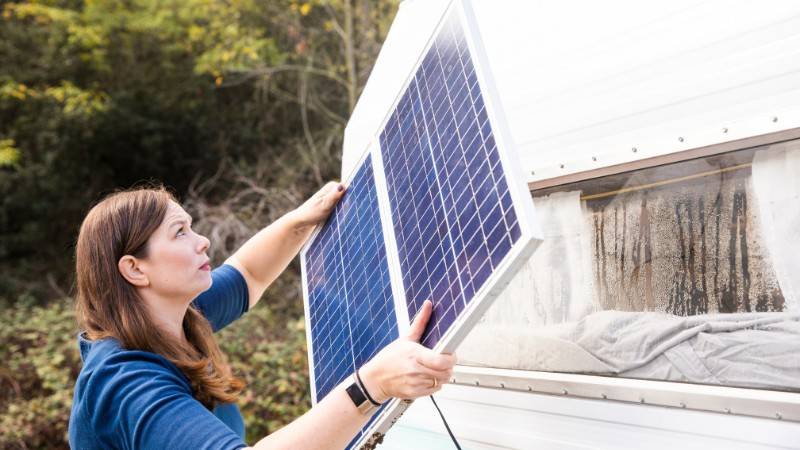
In pursuit of my two biggest passions, road-tripping, and living green, I’m constantly looking to upgrade my game.
It took trial and error, purchase and return, and many hours talking to electrical engineers and grizzled RV owners who’ve seen it all.
And now I can proudly present the best portable solar panels that you can get in the market.
My Top 3 Picks for the Best Portable Solar Panels
The 10 Best Portable Solar Panels (Reviewed by An Electrical Engineer)
1. BLUETTI PV200 Solar Panel 200W — Best Overall
I admit to having become somewhat of a Bluetti brand advocate — thanks to their outstanding Bluetti AC200P solar generator.
While I was looking for some dependable solar panels for my AC200P, the obvious choice was these PV200 200W solar panels.
I wanted higher wattage from my portable solar panels as I needed 2,400Wh of juice for my generator. Bluetti PV200 200W solar panels didn’t disappoint me.
With 4 of these 200W panels, I can fully charge my Bluetti AC200P power station in less than 3 hours. And that’s about 2,400Wh of capacity.
Initially, I wanted to go for the Bluetti SP200, but they were out of stock.
With a high conversion rate (23.4%) and anti-scratch ETFE coating, these portable solar panels let me charge my power station even in less-than-ideal weather conditions.
Thanks to their water-resistance rating, now I don’t have to worry about a sudden shower of rain.
Pros
Cons
Why Do I Like It?
These portable solar panels have four adjustable kickstands, so I can easily set them on uneven ground. Also, Bluetti has very strong market recognition. All credit goes to their superior products with top-shelf build quality.
2. Jackery SolarSaga 200W Solar Panel — The Runner-Up
— “My monocrystalline solar cells deliver 200W of solar output, I weigh less than 20 lbs, and you can fold me into a nice suitcase for carrying around.”
— “Then you must be Bluetti PV200.”
— “Wrong guess. Jackery Boy over here.”
It didn’t take much to realize that the boss fight in this portable solar panels review will be between Bluetti and Jackery. Year after year, two old rivals are launching top-of-the-line solar panels and generators, forcing each other to become better with every new generation of products.
The Jackery SolarSaga 200W is a highly efficient and very portable solar panel that is a worthy runner-up to the Bluetti PV200.
Using four of these panels, I managed to fully recharge my Jackery 1,000-watt solar generator in just 1.8 hours.
And yet, it’s so portable that when folded, it takes up ¼ of its deployed size. Perfect for campers and adventurers who like to travel light.
This is a direct nod to its predecessor, the Jackery SolarSaga 100W, which is among the lightest portable solar panels on the market.
Unfortunately, SolarSaga 200W has lost the ability to charge gadgets directly via USB ports, a feature that made the 100W version so popular.
With an efficiency of 24.3%, SolarSaga 200W is definitely setting a high mark for other solar panels on the list.
A high-efficiency degree is especially important if you don’t have ideal sunlight conditions where you live. The higher the number, the more efficient your solar panel will be in overcast or cloudy weather.
On the downside, Jackery SolarSaga 200W is the most expensive portable solar panel on this list — more than 30% more expensive than the Bluetti PV200!
Hey, but if you want top performance, who am I to look into your wallet?
Pros
Cons
Why Do I Like It?
Jackery solar panels and power stations are like Apple devices of the solar world. You just plug and play, and there’s nothing more to talk about.
3. EcoFlow 160W Portable Solar Panel — Best for Camping
When I’m choosing a solar panel to take camping, I want something lightweight, durable enough for trail use, and with plenty of capacity to charge my camera, phone, and drone.
The EcoFlow 160W ticks all the boxes. It weighs just 15 lbs, it’s IP67 waterproof rated, and has an additional layer of fiberglass, so it’s highly resistant to scratches and falling debris.
This is important from the cleaning aspect as well because out there, the best I can do is a wet cloth.
Due to the water resistance, these solar panels would make a great solar system for a boat. You don’t have to glue or drill anything. The panel has eyelets in the corners, so you can easily rig the panel to the deck or superstructure.
Just take care not to hang it by the eyelets because they’re not designed to support the panel weight.
The whole panel folds nicely into its carrying case, while when deployed, the case acts as a kickstand.
Pros
Cons
Why Do I Like It?
The EcoFlow 160W is a high-end product that will not let you down in the great outdoors. For the best results, I use it with an EcoFlow Delta solar generator. Both rarely leave my trunk.
4. Renogy 100W Foldable Solar Suitcase with Voyager — Best on Budget
If just a couple of years ago, someone told me I’d be able to buy a highly-efficient 100W solar panel from a reputable manufacturer for less than $200, I’d think they’re joking.
However, it’s a fact that solar gear is becoming more and more affordable, so today, you can get a great foldable solar panel that is ideal for van life or boat use.
Of course, for the price point, you can’t expect top capacity, but in bright sunlight, this Renogy 100W Foldable Solar Suitcase was able to recharge my solar battery in 3-4 hours.
Speaking of the battery, this solar panel comes with the Voyager Charge controller with an LCD display.
This means you can charge any type of 12V battery directly, as the controller lets you choose the type of battery with a few clicks.
The solar charge controller is also packed with intelligent protection functions and gives you several charging modes to keep your battery healthy.
If you’re not planning to get a power station, this Renogy 100W Foldable Solar suitcase is an offer you can’t refuse.
Pros
Cons
Why Do I Like It?
Corrosion-resistant aluminum hardware and a rugged carrying handle — this solar panel will last a long time. I must admit I don't use solar panels that fold like a two-piece suitcase. However, this one changed my mind.
5. Renogy 100W 12V Monocrystalline Solar Starter Kit — Best for Limited Spaces
If I can match the cost, I’d always go with more solar panels of a smaller size than one or two big ones.
Why?
First, smaller portable solar panels have a smaller footprint, so they are easier to fit on your RV or boat roof.
Also, if you have only one big panel and it gets damaged or just breaks down, that’s the end of it.
Goodbye solar power.
On the other hand, if I have three or four smaller ones, I can quickly disconnect the broken one and let the others work uninterrupted.
While not what I like to call fully portable, I was able to easily fix this 100W solar panel to a variety of ground and roof mounts, as well as take it down when I haven't been using it for a long time.
Compactly sized and inheriting the high efficiency of Renogy monocrystalline cells, this 100W solar panel kit is a perfect starter pack for anyone looking to try solar energy.
Due to their size, these panels would be perfect for small cabin roofs, while they’d surely feel at home on RVs, trailers, and even bigger boats.
Like its foldable brother, this solar panel comes with the Wanderer PWM Charge Controller that is compatible with four different types of batteries: sealed, gel, flooded, and lithium batteries.
Pros
Cons
Why Do I Like It?
Because of corrosion-resistant aluminum hardware and water resistance, these are the ideal portable solar panels for boats and small yachts.
6. ECO-WORTHY 195 Watt 12 Volt Monocrystalline Solar Panel — Best for RV
There are two schools when it comes to choosing solar panels for RV. One is going with flexible solar panels that you glue or rig flat against the curving RV roof, and the other is using compact but rigid portable panels that you prop on the mounts.
I prefer the second option for both convenience and cooling.
This 195W panel from Eco-Worthy can easily become the next RV-favorite panel. Competitively priced and with a great power rating, it’s a great choice for your trailer kit.
These monocrystalline panels have an above-20% efficiency, so you can maximize solar gains even when your RV is on the road and moving in and out of shade.
I found that the solid frame and hardened panel glass are able to withstand high winds and heavy loads, while beginners will love to hear that all the cables, connectors, and mounting hardware are already in the box.
Still, the reviews on Amazon often complain about the quality of hardware, so I recommend using your own screws.
Pros
Cons
Why Do I Like It?
A near 200-watt solid-frame solar panel at this price point? Shut up and take my money!
7. BougeRV 180W 12V Mono Solar Panel — The Toughest
If Eco-Worthy 195W is the best solar panel for RV, the BougeRV 180W is an easy runner-up in the segment.
It's a bit less powerful, heavier and more expensive, but when it comes to choosing between this and the Eco-Worthy 195W, I say don’t give it much thought.
Get one that gives a better discount at that moment.
It comes with pre-drilled holes in the back of the panel which allows you to install them without any heavy tools.
These semi-portable panels are great if you venture in areas with extreme weather. While they can work with no problem in the rain like true rigid frame panels, the BougeRV 180W can also withstand high winds of 2,400 Pa and snow loads of 5,400 Pa.
Pros
Cons
Why Do I Like It?
Although a relatively new name in the solar market, BougeRV is a Chinese company that seems to be committed to becoming a legitimate brand in the RV and solar community.
8. Anker 625 Solar Panel with Adjustable Kickstand — Most Portable
How can you tell that your portable solar panel is perfectly aligned with the sun every time? You definitely can’t drill a peephole through one, right?
The Anker 625 has solved an issue with an ingenious feature — a simple sun device that aligns a shadow of a dot on the glass with the circle on the dial. So whenever the shadow dot is in the circle, your solar panel is perfectly aligned with the sun.
Another nice feature that you don’t normally find on portable solar panels is the adjustable kickstand, which helps you tilt the panel at the right angle toward the sun.
With a weight of only 11 lbs, this is a hiker’s solar panel through and through.
I’ve taken mine to the beach, on a couple of fishing trips, and regularly for camping trips as a backup to my SolarSagas.
And while the Anker 625 is not impressive in terms of power capacity, it has a USB-A and USB-C port. So I can charge my phone and laptop directly from the solar panel; no battery or inverter is needed.
Pretty cool.
Pros
Cons
Why Do I Like It?
In my opinion, every portable and foldable solar panel needs to have a direct USB charging option. If your power station fails, the ability to charge a phone directly from the panel can be lifesaving.
9. Jackery SolarSaga 100W Solar Panel — Most Versatile
If the old adage “Jack-Of-All-Trades” can be applied to portable solar panels, it would best describe the versatile Jackery SolarSaga 100W.
Put it in your trunk, strap it to your RV roof, or stash it somewhere with your survival gear. This 100-watt solar folder is ideal for outdoor life but also comes in handy for power outages.
Like its big brother, the 200W version, this solar panel comes with nice features, like anchoring eyelets, plus USB-A and USB-C outputs.
This was a great option for me when I needed to charge up my phone or Macbook in a pinch — no battery or power station was needed.
On the other hand, the Solar Saga 100W also shares its big brother’s weakness — it is only compatible with Jackery power stations.
Pros
Cons
Why Do I Like It?
Direct charging through USB-A and USB-C ports is an attractive feature, especially for the younger generation of off-gridders. Hey, you still have to upload those Insta reels, right?
10. Goal Zero Boulder 100 Solar Panel Briefcase — Solid Build Quality
I could hardly think of a better name for this portable solar panel.
The Boulder is designed as a self-contained, rugged, and durable briefcase, just like something you’d expect to see in a Michael Bay movie.
The two 50-watt monocrystalline solar panels are connected by a sturdy hinge, while the integral kickstand lets you set the optimal angle to the sun.
And as if reinforced aluminum and corner protection weren’t enough, the panels are covered with tempered glass.
So why is this solar panel tank the last on the list?
First, it’s got a very limited application. I was hard-pressed to find a way to strap it to my RV.
The rigid construction prevented me from placing it flush with any kind of curving roof or surface. Yes there was the kickstand, but whenever the ground was soft and wet, there was little I could do about it.
Finally, it’s too heavy to haul around. This ironically beats the whole end-of-days suitcase design.
Pros
Cons
Why Do I Like It?
So, who are these portable solar panels for? I’d say prepper types and people living in areas that are prone to extreme weather events like hurricanes and floods. The Goal Zero Boulder will survive.
Things to Consider While Buying the Best Portable Solar Panels
What Type of Portable Solar Panels Do You Need?
My idea of portable solar panels might not be yours, or to say it more accurately, my need for portable solar power might be different than yours at the moment.
The best portable solar panels for an RV might not be the best portable solar panels for camping or partying.
That’s why this review includes three basic types of portable solar panels:
Foldable portable solar panels rated from 100 to 200 watts are the best all-rounders. You can use them to power your RV, outdoor cabin, or boat, but are still light and compact enough to pack them with your camping gear.
Rigid-frame compact portable solar panels usually come with pre-drilled holes. This makes them easy to install on all kinds of roofs and mounts.
They have sturdier (but also heavier) frames and are a good choice for folks who don’t want to tamper with their panels much once they set them up.
Finally, ultralight foldable solar panels are easy to pack in a rucksack or keep in your trunk even if you drive a Chevrolet Spark. These portable solar panels are designed to go everywhere you go, which makes them ideal for beach parties, picnics, and hiking tours.
They come with plenty of eyelets, so you can easily strap them to your tent or backpack and provide direct USB charging to your devices.
What’s Under the Hub?
Of course, size and wattage are not the only things you should look for.
Although all portable solar panels reviewed here have monocrystalline solar cells, which are the most efficient, the market is still saturated with the less expensive but also less efficient:
Thin-film solar panels are the most flexible of the three, and one could easily think they’re the best choice for portable solar kits.
Right?
Well, they were once when they were the peak technology. By today’s standards, thin-film panels have unforgivingly low efficiency that's between 7% and 10%.
Now compare that with the portable solar panels on this list, which all have efficiencies of 20% and above.
If you want my advice, always go for monocrystalline portable solar panels. They might be more expensive upfront but will last longer than polycrystalline and thin-film solar panels.
Polycrystalline solar panels have a lifespan that's about the same as monocrystalline panels, 25-30 years, but their efficiency drops faster over time.
Portable Solar Panel Use Cases
The way you see yourself using your portable solar panels will help you make the right choice.
If you’re an RV fan like me, the good news is that many great portable options are available these days. The right portable solar panel kit can meet your whole RV's needs for electricity, including kitchen appliances and TV.
Are you looking to charge your phone and camera while camping?
Go for soft-lined foldable solar panels you can strap over your tent roof for the best exposure.
When it comes to boats, you can go either foldable or rigid frame. But the most important thing is to choose a product with IP67 protection that can handle a few splashes and even a dip.
How Much Wattage Should You Go for?
The wattage is closely related to the way you are going to use your portable solar panels.
Let’s make things clear from the start — if you want to power the appliances and lighting in your RV or off-grid cabin, skip the cheap portable solar panels and look to 100W and 200W products.
So how much combined wattage do you need?
Each electric device has a specific power consumption which you can find on the bottom label.
For example, if you want to power a 500-watt fridge, you’ll need 3x200W solar panels.
The sunshine is not always perfect. And there is also shading, temperature, and dust that affect the output of your solar panels. That’s why you should always go for more wattage than you actually need.
One way or another, I always recommend powering your appliances through a charge controller or power station. More on that coming up.
How Many Panels Do You Need? (Hint: One Might NOT Be Enough!)
I often get the question if having one solar panel with a high-capacity power generator is enough.
After all, a 1,000 or 2,000-watt solar power generator with a beefy battery can take care of most of your appliances. This is true, but that solar generator needs charging.
And how many hours of sunlight a day can you ideally get?
Pair a 100W panel with a 1,000Wh solar generator and it’ll take 10 hours to charge up and that’s in ideal conditions. You simply don’t have that time.
Now imagine having two or three appliances plugged in at the same time.
Ideally, your panel’s combined wattage should be enough to charge your solar generator from 0-100 in a couple of hours. So, in my opinion, installing solar panels is totally worth it.
So, whether it's going to be 5x100W panels or 3x200W, it’s up to you.
Compatibility with other devices
Also, you need to consider what you want to charge with your portable panels and make sure your panels are compatible with those devices.
You can charge a solar battery (through a charge controller) or a solar generator that already contains the charge controller and an onboard battery.
You should be aware that many of these solar panels are made to be compatible only with the same brand of devices.
For example, Jackery SolarSaga panels can only charge the Jackery Explorer line of solar generators (not including gadgets you charge via USB ports), while the Explorer solar generators can only take charge from SolarSaga panels.
Even if they are compatible with other manufacturers’ devices, most solar panel manufacturers recommend using their batteries or solar generators as well, for the best result.
Something you should keep in mind when choosing portable solar panels.
How to Setup Your Solar Panel for the First Time
Since we’re talking about portable solar kits, the installation steps will be different from setting up a solar array for your whole house.
3 Steps to Setup Your Solar Panel
Step 3
Connect the solar panels to your solar generator. These generators already have inverters, fuses, batteries, and control displays, so you can always tell how much energy is being used and how much it is charging on solar.
Thieves, Stay Away From My Portable Solar Panels!
Portable solar panels have many advantages, but some of them are also disadvantages. If you can set them up and take them down easily, so can someone else!
To avoid this, you can protect your solar panels in several ways.
You can get a solar panel alarm system that detects irregular movements, as in when someone is trying to remove them from your RV roof.
You can also make the removal less easy by fastening them with steel bolts and nuts instead of using a paracord.
Finally, you can always install an HD camera with a motion detector and a floodlight that engages only when someone gets into the area where you set your solar panels.
How to Make Your Portable Solar Panel Squeaky Clean
These days, solar panels are coated with a self-cleaning layer that helps them shed dust and debris.
Always remember — dirt, sap, and dust deposits reduce the efficiency of your portable solar panel and you need to clean your solar panel from time to time.
However, especially after longer use, you’ll have to deal with bird droppings and tree sap, which calls for your intervention:
Do You Need a Charge Controller for Your Portable Solar Generator?
A charge controller is a voltage/current regulator that keeps your battery from overcharging. It regulates the voltage and current coming from the solar panels to the battery.
Luckily, today’s best portable solar generators Like the Jackery 1000 Pro and Bluetti AC200P come with advanced MPPT (Multiple Power Point Tracking) charge controllers that ensure the “best match” between your portable solar panel and the battery.
This basically means that very little energy is lost in the charging process.
FAQ
Yes, a portable solar panel is definitely worth it. It may not replace a rooftop or ground-mounted solar array, but it’s much more convenient for RVing or camping off the grid.
A 200 watt solar panel will run your laptop for 22 hours, a coffee maker for 1 hour, or a microwave oven for 90 minutes.
A portable solar panel lasts between 25 and 30 years before its energy output begins to visibly decline.
For a 300 watt solar panel, you need at least a 100Ah so you can draw 1000 watts. You can go with a smaller battery, but only if you’ll be drawing power for a short time.
Yes, a 200-watt solar panel can run a TV but only if it’s a 150 watt TV. Keep in mind that 200-watt solar panels provide 200 watts of electric energy only in most ideal conditions, and there’s always a bit lost in the conversion.
Yes, a 100-watt solar panel can run a refrigerator but only for a short time and would also need a battery.
No, your solar panel isn’t broken. The real wattage depends on many factors like the available sunlight, the angle of your panel, clouds, shade, etc. Even the outside temperature can affect their conversion, as solar cells don’t work as efficiently when it’s hot outside.
My Recommended Portable Solar Panel
After much consideration, the best portable solar panel for your money is the Bluetti PV200 Solar Panel 200W.
The Bluetti PV200 is compact and foldable but gives me 200 watts of solar power.
Although it’s not the lightest solar panel on the list, my PV200 solar panel sees more uses than any other — camping, RVing, boating, you name it.
It’s also water-resistant and has an anti-scratch coating, which not only makes it ideal for any type of weather but also makes cleaning much easier.
The Bluetti PV200 is powerful, compact, and impervious to the elements — everything I could ever ask for from a portable solar panel.

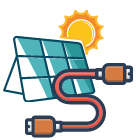














Pingback: The Most Durable Portable Solar Panels You Can Buy - Techy Zip
Pingback: Green Camping 101: Go Green With Your Camping Habits - GreenCitizen
We’ve been living full-time RVs for just over a year now, traveling North America and seeing all the amazing wilderness we can get in our 5th gear RV. Until a month ago, we relied mainly on 3400-watt generators to charge the batteries and turn on the lights. I was considering buying one of Renogy’s portable solar panels. At this point, I really wish we’d buy one of these first. It manages everything I need to maximize solar energy collection and storage. It charges the battery in four stages, optimizing the battery’s energy storage potential. It automatically detects flooded lithium, SLA, and gel batteries.
Pingback: Patriot Power Generator Review: Is It A Scam? (2021 Updated) | GreenCitizen
I think the Renogy 100w Solar Panel (Compact Design) needs closer scrutiny for installation on smaller campers, boats, and buildings.
With a 21% efficiency rating, it rivals Renogy’s standard 100w panel. Compared to a similar design like the ACOPower 100w, it is 1.5lbs heavier.
But this weight difference suggests a better build quality meaning it should be more durable, which is reflected in the price difference.
The Renogy 100w Compact Design should be taken seriously by anybody with a project that requires a smaller solar panel to fit the space.